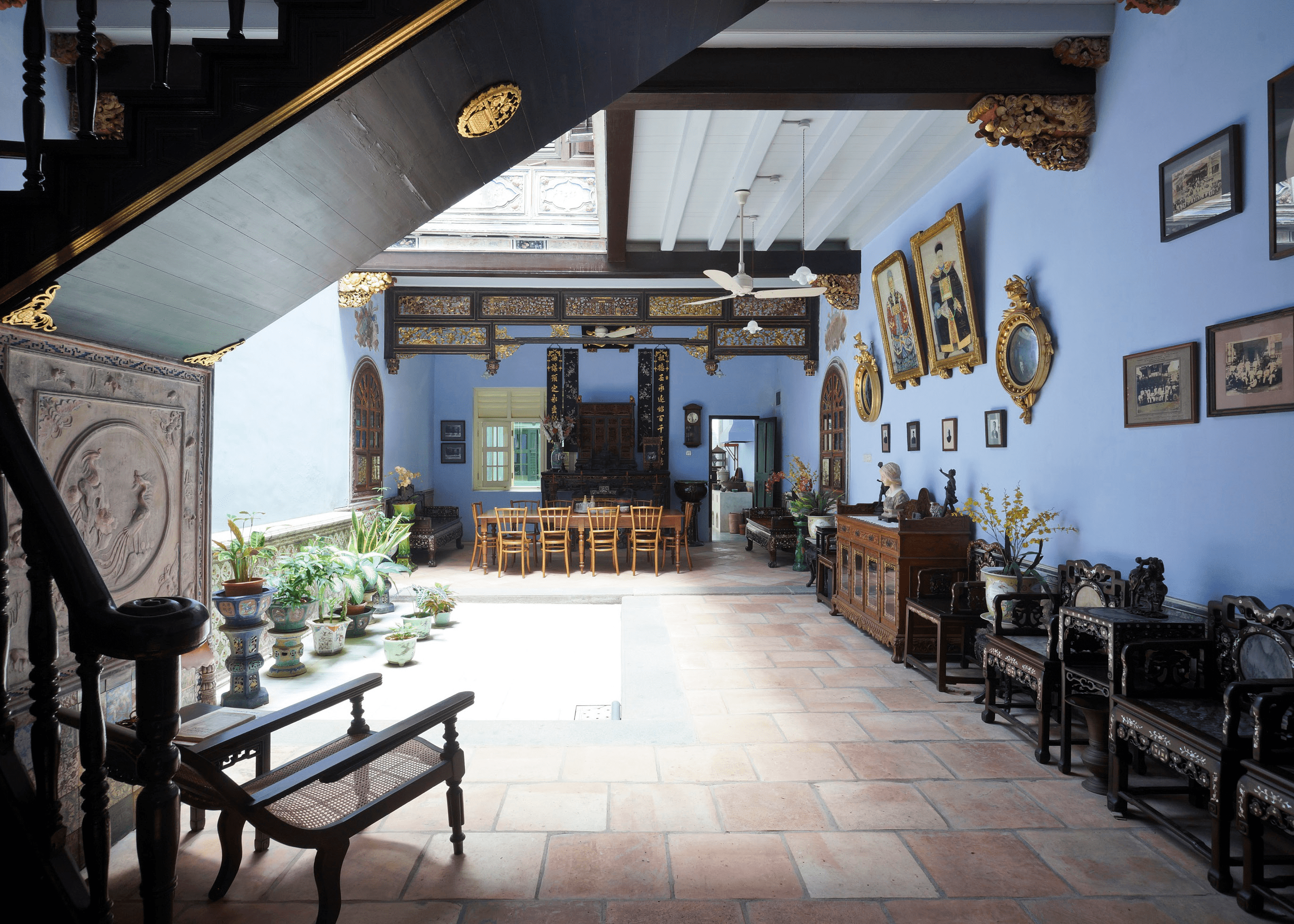Stories > Where Culture Dwells
Where Culture Dwells
Sensitively restored to reflect cultural nuances in a domestic setting, the NUS Baba House pays homage to the richly layered Peranakan heritage.
BY CARA YAP
PHOTO OLIVIA KWOK

traddling Singapore’s brisk central business districts of Chinatown and Tanjong Pagar, Neil Road – lined with conservation townhouses, clad in decorative facades, and presided over by glass and steel buildings – seems marooned in time.
But the dichotomy between such soaring works of modern architecture and the area’s comparatively squat two- and three-storey houses transcends outward appearances. Nowhere is this more apparent than the NUS Baba House at 157 Neil Road. The cornflower, blue-coated centenarian sits among the Blair Plain conservation area that was gazetted by the Urban Redevelopment Authority (URA) in 1991. The precinct’s other famous landmarks include the childhood home of Singapore’s founding prime minister, Lee Kuan Yew.
What sets the property apart from its storied neighbours is the detail to which it has been restored – from its intricate friezes to the ceramic applique phoenix and re-gilded dragon head bracket seen at the main entrance.
Here, step through ornamental pintu pagar (wooden half doors) and you’ll enter the abode of a wealthy 20th century Peranakan family. Built in the 1890s, the three-storey townhouse for generations housed the descendants of Straits Chinese shipping tycoon Wee Bin, whose fleet of 20 vessels served the Chinese and Dutch Indies trade.
The family’s affluence is writ large on the artistry that can be seen throughout the Tardis-like home – from the elaborate floor-to-ceiling gilt-edged screens and partitions in the foyer to finely carved lintel frames in the hall.
Despite the allusion of domesticated comfort, the NUS Baba House is no longer the private realm of intimate family gatherings. Instead, it exists as a true-to-life display of the hybridity of the Peranakan culture, which merges influences from Malay, Chinese and European societies. Said to be one of the last remaining preserved traditional Peranakan houses, it was acquired by the National University of Singapore (NUS) in 2006. This was enabled by a S$4 million donation from the daughter of a late Straits Chinese community leader. Thanks to a collaborative effort between NUS researchers, the URA and Peranakan Association of Singapore, it was meticulously restored, with the help of archival drawings, and opened to the public as a museum in 2008.
Visitors, who must book tours by appointment, can peruse a panoply of over 2,000 antiques and objects. Its guided heritage tours allow them to explore the cloistered world of prosperous early 20th-century Peranakans, deciphering customs that are rarely practised today. For instance, guides can help contextualise the juxtaposition of mirrors and pathways that are said to confuse evil spirits. Today, the NUS Baba House continues to offer historical antecedents to Singapore’s diverse cultural identity. “I am in awe of the effort that has gone into restoring this piece of historical architecture, as well as documenting its stories. Despite its development in a short span of time, Singapore’s people are certainly no philistines,” says Japanese tourist, Hiroshi Takayama, who visited the museum in 2018.
